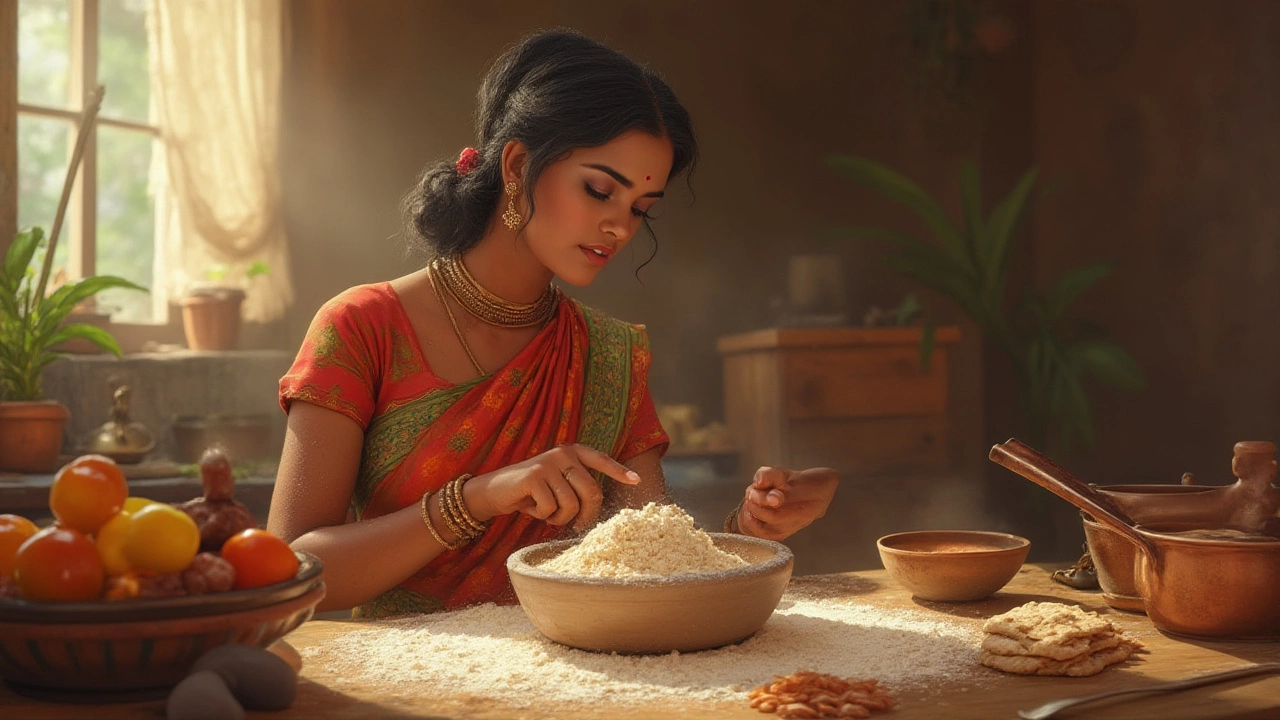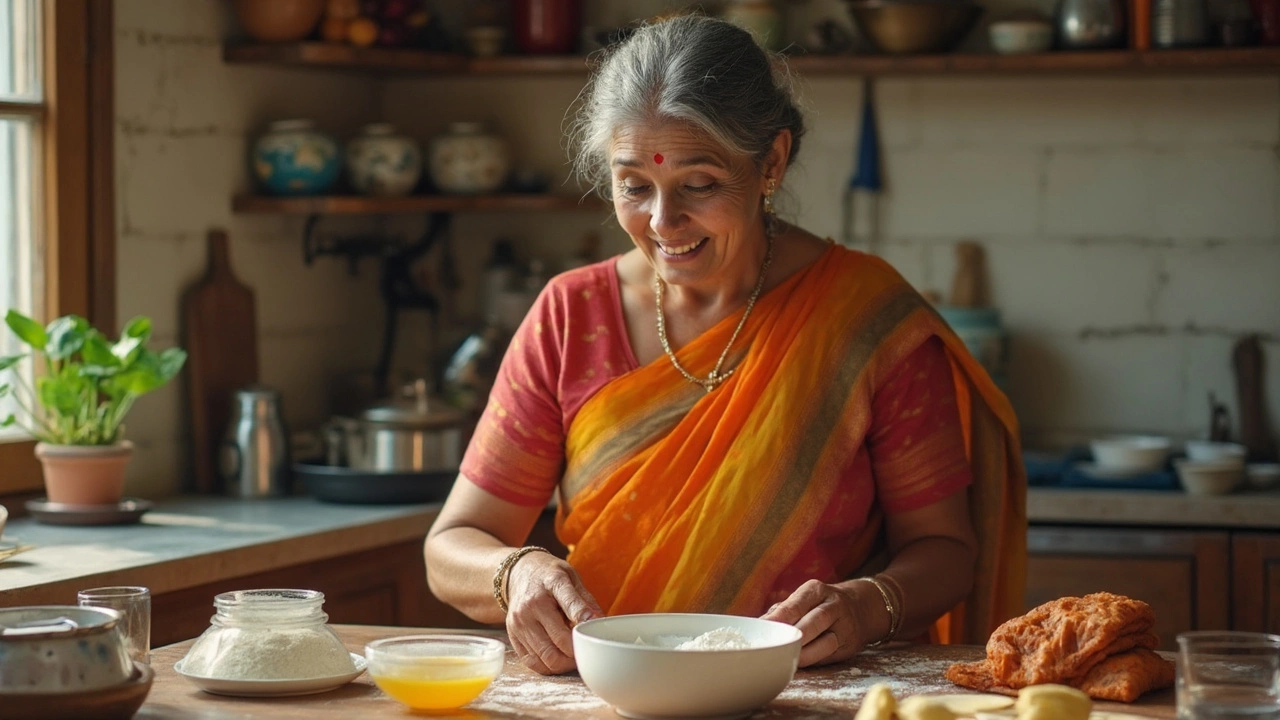Indian Bread: A Quick Guide to India's Staple Flatbreads
When talking about Indian bread, the family of unleavened flatbreads that accompany most Indian meals. Also known as Indian flatbread, it serves as a vehicle for gravies, a snack on its own, and a cultural symbol across the subcontinent.
Indian bread comes in many shapes and sizes, but three names pop up most often: Roti, a thin wheat‑based disc cooked on a hot griddle. Also called chapati, roti is the everyday bread of North India. Naan, a leavened flatbread baked in a tandoor oven brings a soft, slightly charred surface that pairs perfectly with curries. And then there’s Paratha, a layered, pan‑fried bread often stuffed with vegetables or spices, beloved for its crisp edges and rich taste.
These breads share core attributes: a simple dough of flour, water, and sometimes oil or yogurt; a cooking method that decides texture; and a regional twist that adds depth. For example, the puff‑up of a roti depends on dough hydration and the heat of the tawa – a classic cause‑and‑effect relationship that many home cooks overlook. Adding oil at the right stage, as many chefs recommend, yields softer rotis and flakier parathas. Naan, on the other hand, relies on leavening and the high heat of a tandoor, which creates those signature bubbles and a smoky aroma. Understanding these connections helps you troubleshoot why a roti might stay flat or why a naan doesn’t develop a golden crust.
Beyond technique, the choice of flour, the amount of resting time, and even the climate play a role. Whole‑wheat flour gives roti a nutty flavor but may need extra water to stay pliable. White flour produces the airy lift in naan but can feel heavy if over‑kneaded. Stuffed parathas require a rest period for the layers to settle, preventing tears when rolling. These practical details appear throughout our collection of articles – from fixing a roti that won’t puff, to timing the oil addition in dough, to mastering the perfect naan bake.
Ready to put this knowledge to work? Below you’ll find a carefully curated set of guides that dive deeper into each flatbread type, offer troubleshooting tips, and share quick recipes you can try tonight. Whether you’re a beginner looking for the basics or an experienced cook fine‑tuning your technique, the posts ahead will give you actionable insights to elevate every Indian bread you make.

Baking Soda in Roti: Should You Use It or Not?
Curious if you should add baking soda to roti? Get the facts, expert cooking tips, and see how a pinch of soda can change texture, taste, and tradition.

Does Roti Need Baking Powder? The Real Deal for Softer Breads
Wondering if you should add baking powder to roti dough? This article breaks down if baking powder is a must for soft rotis, how it changes texture, and what most home cooks actually do. Find practical tips, some science behind old-school methods, and easy hacks for perfecting your rotis every time. Plus, learn which tweaks make a difference and what’s just a time-waster in the kitchen.